120-95-6
| Name | 2,4-Di-tert-pentylphenol |
|---|---|
| Synonyms |
2,4-Bis(2-methyl-2-butanyl)phenol
2,4-Di-tert-pentylphenol EINECS 204-439-0 MFCD00041929 2,4-Di-tert-amylphenol 2,4-Bis(2-methylbutan-2-yl)phenol 2,4-bis(1,1-dimethylpropyl)phenol |
| Density | 0.9±0.1 g/cm3 |
|---|---|
| Boiling Point | 285.1±0.0 °C at 760 mmHg |
| Melting Point | 25 °C(lit.) |
| Molecular Formula | C16H26O |
| Molecular Weight | 234.377 |
| Flash Point | 139.9±7.8 °C |
| Exact Mass | 234.198364 |
| PSA | 20.23000 |
| LogP | 5.92 |
| Vapour Pressure | 0.0±0.6 mmHg at 25°C |
| Index of Refraction | 1.495 |
Synonym:Di-Tert-Amylphenol; 2,4-Di-Tert-Amylphenol Section 2 - COMPOSITION, INFORMATION ON INGREDIENTS
Risk Phrases: 22 36/38 Section 3 - HAZARDS IDENTIFICATION EMERGENCY OVERVIEW
Harmful if swallowed. Irritating to eyes and skin. Potential Health Effects Eye: Causes eye irritation. May cause chemical conjunctivitis. Skin: Causes skin irritation. Ingestion: Harmful if swallowed. May cause gastrointestinal irritation with nausea, vomiting and diarrhea. Inhalation: Causes respiratory tract irritation. Chronic: Effects may be delayed. Section 4 - FIRST AID MEASURES Eyes: Immediately flush eyes with plenty of water for at least 15 minutes, occasionally lifting the upper and lower eyelids. Get medical aid. Skin: Get medical aid. Flush skin with plenty of water for at least 15 minutes while removing contaminated clothing and shoes. Wash clothing before reuse. Ingestion: Never give anything by mouth to an unconscious person. Get medical aid. Do NOT induce vomiting. If conscious and alert, rinse mouth and drink 2-4 cupfuls of milk or water. Inhalation: Remove from exposure and move to fresh air immediately. If not breathing, give artificial respiration. If breathing is difficult, give oxygen. Get medical aid. Do NOT use mouth-to-mouth resuscitation. Notes to Physician: Treat symptomatically and supportively. Section 5 - FIRE FIGHTING MEASURES General Information: As in any fire, wear a self-contained breathing apparatus in pressure-demand, MSHA/NIOSH (approved or equivalent), and full protective gear. During a fire, irritating and highly toxic gases may be generated by thermal decomposition or combustion. Use water spray to keep fire-exposed containers cool. Water may be ineffective. Material is lighter than water and a fire may be spread by the use of water. Vapors may be heavier than air. They can spread along the ground and collect in low or confined areas. Containers may explode when heated. Extinguishing Media: Water may be ineffective. Cool containers with flooding quantities of water until well after fire is out. Use water spray, dry chemical, carbon dioxide, or appropriate foam. Section 6 - ACCIDENTAL RELEASE MEASURES General Information: Use proper personal protective equipment as indicated in Section 8. Spills/Leaks: Vacuum or sweep up material and place into a suitable disposal container. Avoid runoff into storm sewers and ditches which lead to waterways. Clean up spills immediately, observing precautions in the Protective Equipment section. Remove all sources of ignition. Provide ventilation. Section 7 - HANDLING and STORAGE Handling: Wash thoroughly after handling. Remove contaminated clothing and wash before reuse. Use with adequate ventilation. Minimize dust generation and accumulation. Avoid contact with eyes, skin, and clothing. Keep container tightly closed. Avoid ingestion and inhalation. Storage: Store in a tightly closed container. Store in a cool, dry, well-ventilated area away from incompatible substances. Section 8 - EXPOSURE CONTROLS, PERSONAL PROTECTION Engineering Controls: Facilities storing or utilizing this material should be equipped with an eyewash facility and a safety shower. Use adequate ventilation to keep airborne concentrations low. Exposure Limits CAS# 120-95-6: Personal Protective Equipment Eyes: Wear appropriate protective eyeglasses or chemical safety goggles as described by OSHA's eye and face protection regulations in 29 CFR 1910.133 or European Standard EN166. Skin: Wear appropriate protective gloves to prevent skin exposure. Clothing: Wear appropriate protective clothing to prevent skin exposure. Respirators: A respiratory protection program that meets OSHA's 29 CFR 1910.134 and ANSI Z88.2 requirements or European Standard EN 149 must be followed whenever workplace conditions warrant respirator use. Section 9 - PHYSICAL AND CHEMICAL PROPERTIES Physical State: Solid Color: yellow Odor: phenol-like pH: Not available. Vapor Pressure: Not available. Viscosity: Not available. Boiling Point: Not available. Freezing/Melting Point: 25 deg C Autoignition Temperature: Not available. Flash Point: 143 deg C ( 289.40 deg F) Explosion Limits, lower: Not available. Explosion Limits, upper: Not available. Decomposition Temperature: Solubility in water: Specific Gravity/Density: .9300g/cm3 Molecular Formula: C16H26O Molecular Weight: 234.38 Section 10 - STABILITY AND REACTIVITY Chemical Stability: Stable at room temperature in closed containers under normal storage and handling conditions. Conditions to Avoid: Incompatible materials, dust generation, excess heat, strong oxidants. Incompatibilities with Other Materials: Oxidizing agents. Hazardous Decomposition Products: Carbon monoxide, irritating and toxic fumes and gases, carbon dioxide. Hazardous Polymerization: Has not been reported Section 11 - TOXICOLOGICAL INFORMATION RTECS#: CAS# 120-95-6: SL3500000 LD50/LC50: CAS# 120-95-6: Draize test, rabbit, eye: 100 mg Moderate; Oral, rat: LD50 = 330 mg/kg. Carcinogenicity: Phenol, 2,4-Bis(1,1-Dimethylpropyl)- - Not listed by ACGIH, IARC, or NTP. Other: See actual entry in RTECS for complete information. Section 12 - ECOLOGICAL INFORMATION Section 13 - DISPOSAL CONSIDERATIONS Dispose of in a manner consistent with federal, state, and local regulations. Section 14 - TRANSPORT INFORMATION IATA Not regulated as a hazardous material. IMO Not regulated as a hazardous material. RID/ADR Not regulated as a hazardous material. Section 15 - REGULATORY INFORMATION European/International Regulations European Labeling in Accordance with EC Directives Hazard Symbols: XN Risk Phrases: R 22 Harmful if swallowed. R 36/38 Irritating to eyes and skin. Safety Phrases: S 26 In case of contact with eyes, rinse immediately with plenty of water and seek medical advice. S 28A After contact with skin, wash immediately with plenty of water. S 37 Wear suitable gloves. S 37/39 Wear suitable gloves and eye/face protection. S 45 In case of accident or if you feel unwell, seek medical advice immediately (show the label where possible). WGK (Water Danger/Protection) CAS# 120-95-6: No information available. Canada CAS# 120-95-6 is listed on Canada's DSL List. CAS# 120-95-6 is not listed on Canada's Ingredient Disclosure List. US FEDERAL TSCA CAS# 120-95-6 is listed on the TSCA inventory. SECTION 16 - ADDITIONAL INFORMATION N/A |
CHEMICAL IDENTIFICATION
HEALTH HAZARD DATAACUTE TOXICITY DATA
|
| Symbol |

GHS07 |
|---|---|
| Signal Word | Warning |
| Hazard Statements | H302-H319 |
| Precautionary Statements | P305 + P351 + P338 |
| Personal Protective Equipment | Eyeshields;Faceshields;full-face respirator (US);Gloves;multi-purpose combination respirator cartridge (US);type ABEK (EN14387) respirator filter |
| Hazard Codes | Xn:Harmful; |
| Risk Phrases | R22;R36/38 |
| Safety Phrases | S26-S37/39 |
| RIDADR | NONH for all modes of transport |
| WGK Germany | 2 |
| RTECS | SL3500000 |
| Packaging Group | I; II; III |
| HS Code | 2907199090 |
|
~0% 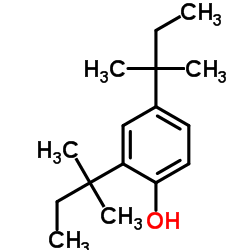
120-95-6 |
| Literature: Yutilov; Svertilova; Minkina; Shcherbina; Kirillova Russian Journal of Applied Chemistry, 2000 , vol. 73, # 12 p. 2106 - 2108 |
|
~% 
120-95-6 |
| Literature: WO2011/14474 A1, ; Page/Page column 36 ; |
|
~1%
Detail
|
| Literature: WO2011/14405 A1, ; Page/Page column 42 ; |
|
~% 
120-95-6 |
| Literature: US2267687 , ; |
|
~% 
120-95-6 |
| Literature: US2267687 , ; |
|
~% 
120-95-6 |
| Literature: US1972599 , ; |
|
~% 
120-95-6 |
| Literature: US2267687 , ; |
| Precursor 6 | |
|---|---|
| DownStream 10 | |
| HS Code | 2907199090 |
|---|---|
| Summary | 2907199090 other monophenols VAT:17.0% Tax rebate rate:9.0% Supervision conditions:none MFN tariff:5.5% General tariff:30.0% |

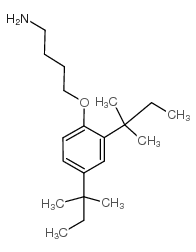
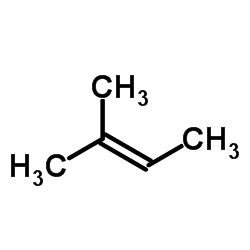
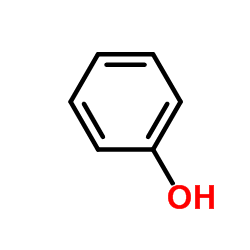


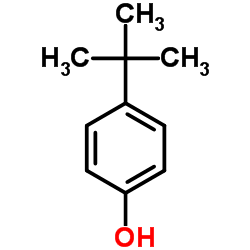

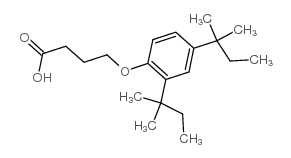
![4-[2,4-bis(2-methylbutan-2-yl)phenoxy]benzene-1,2-dicarbonitrile structure](https://image.chemsrc.com/caspic/114/141031-59-6.png)

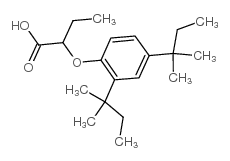
![1-HYDROXY-N-[4-(2,4-DI-TERT-PENTYLPHENOXY)BUTYL]-2-NAPHTHAMIDE structure](https://image.chemsrc.com/caspic/361/32180-75-9.png)
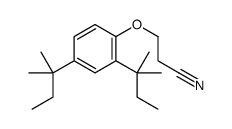
![[2,4-bis(1,1-dimethylpropyl)phenoxy]acetyl chloride structure](https://image.chemsrc.com/caspic/247/88-34-6.png)
![2-[2,4-bis(1,1-Dimethylpropyl) phenoxy] butyric acid ethyl ester structure](https://image.chemsrc.com/caspic/308/69080-71-3.png)